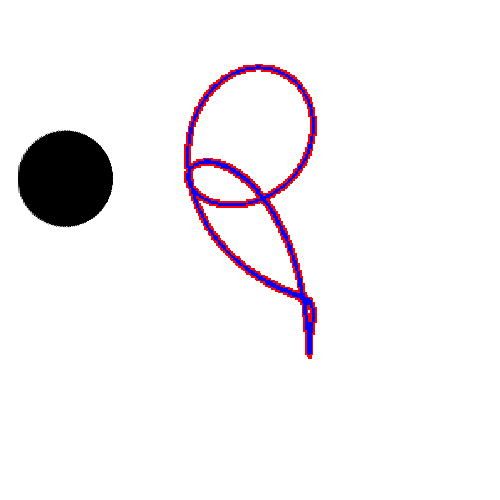Cosmic Strings

Cosmic strings are essentially infinitesimally thin strings that loop around on themselves. They are predicted from a number of high energy physics models, including string theory. They have a number of interesting properties that sets them apart from particles, which makes them interesting objects to study. However, we have never observed a cosmic string, so all of this work is presently theoretical.
One of the interesting properties of a cosmic string is that it doesn't take 360 degrees to walk around one; it takes slightly less. This phenomena is called the "deficit angle", and leads to some interesting properties for the gravitational lensing of light by cosmic strings. I am currently working to create code to trace geodesics (the path that light takes) when it moves in the vicinity of a cosmic string. The idea is to use this code to investigate what happens when a cosmic string passes in front of a star: is the star magnified? by how much? how long does the magnification last for? how often does it happen? All of these questions are aimed at understanding what will be needed to observe cosmic strings in our universe. The image displayed here is of a circular star moving on a circle behind an artificially static string, just to see what would happen (image credit William Throwe). Notice that at particular points, there are multiple images of the star.
The other issue that I am interested in is the gravitational radiation emission from cosmic strings. The emission of this radiation will affect the evolution of the string's movement, and it is an interesting question to understand exactly how this happens. If particular features of a string are accentuated or supressed, this may affect the likelihood of actually observing cosmic strings (particularly in the gravitational spectrum).
